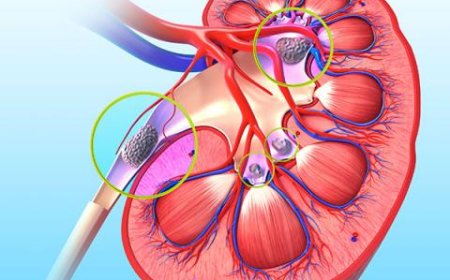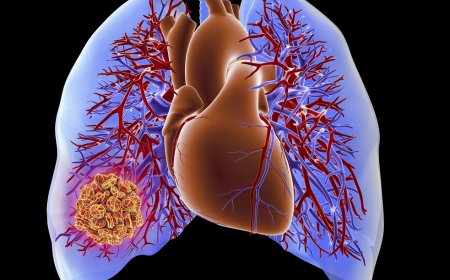How to Find Mental Health Walks in the Sandia Foothills Albuquerque
How to Find Mental Health Walks in the Sandia Foothills, Albuquerque The Sandia Foothills region of Albuquerque, New Mexico, offers more than breathtaking desert landscapes and panoramic views of the Rio Grande Valley—it provides a sanctuary for mental well-being. In recent years, the therapeutic power of nature has gained widespread recognition in psychological and medical communities. Walking th
How to Find Mental Health Walks in the Sandia Foothills, Albuquerque
The Sandia Foothills region of Albuquerque, New Mexico, offers more than breathtaking desert landscapes and panoramic views of the Rio Grande Valley—it provides a sanctuary for mental well-being. In recent years, the therapeutic power of nature has gained widespread recognition in psychological and medical communities. Walking through the quiet trails of the Sandia Foothills, surrounded by piñon pines, junipers, and the soft rustle of wind over mesquite, has become a vital, accessible tool for managing anxiety, depression, and emotional fatigue. Unlike clinical interventions that require appointments and costs, nature-based walks are free, immediate, and deeply grounding. This guide will show you how to find structured and self-guided mental health walks in the Sandia Foothills, how to maximize their benefits, and how to integrate them into your daily life for lasting emotional resilience.
Mental health walks are not merely physical exercise—they are intentional, mindful movements through environments that soothe the nervous system. The Sandia Foothills, with its elevation changes, quiet solitude, and abundant native flora, create a uniquely restorative setting. Whether you’re recovering from burnout, navigating grief, or simply seeking clarity, these walks offer a path to inner peace without the need for medication or therapy sessions. This tutorial will walk you through every step of discovering, preparing for, and sustaining these walks as a core component of your mental health routine.
Step-by-Step Guide
Step 1: Understand What Makes a Walk “Mental Health-Focused”
Not all walks are created equal when it comes to supporting mental health. A mental health walk is intentional. It prioritizes presence over pace, sensory awareness over distance, and emotional reflection over physical achievement. Unlike a fitness hike aimed at calorie burn or endurance, a mental health walk is slow, quiet, and deeply attuned to your internal state. In the Sandia Foothills, this means choosing trails that offer solitude, minimal noise pollution, and natural beauty that invites contemplation.
Key characteristics of a mental health walk include:
- Low to moderate foot traffic
- Shaded or open spaces that allow for sun exposure (vitamin D supports mood regulation)
- Minimal digital connectivity (to reduce distractions)
- Accessible terrain for all mobility levels
- Nearby rest points or benches for pauses
Begin by shifting your mindset: this is not about how far you go, but how deeply you feel.
Step 2: Identify Public Trails in the Sandia Foothills
The Sandia Foothills are crisscrossed with public trails managed by the City of Albuquerque, Bernalillo County, and nonprofit land trusts. The most accessible and mental health-friendly trails include:
- La Cueva Trail – A gentle, 1.2-mile loop with interpretive signs about native plants. Quiet, shaded, and ideal for beginners.
- Tramway Canyon Trail – A 2.5-mile out-and-back trail with gradual elevation gain and sweeping views of the valley. Less crowded than the main Sandia Peak trails.
- Los Pinos Trail – A 1.8-mile loop through dense piñon-juniper woodland with multiple benches. Known for birdwatching and stillness.
- Albuquerque BioPark Trail (Foothills Section) – A paved, ADA-accessible path that connects to the Rio Grande bosque. Perfect for those seeking flat terrain and water sounds.
- Sanchez Trail – A 3-mile loop with several overlooks and minimal elevation. Popular with locals but rarely crowded before 10 a.m.
Use the City of Albuquerque’s Official Trails Map to view trailhead locations, lengths, and difficulty ratings. Filter for “Easy” or “Moderate” trails with “Low Traffic” indicators.
Step 3: Plan Your Walk Around Optimal Mental Health Conditions
Timing and weather significantly impact the therapeutic value of your walk. For maximum mental health benefit:
- Go early morning (6:30–8:30 a.m.) – The air is cool, the light is soft, and trails are quietest. Morning sunlight helps regulate circadian rhythms and boosts serotonin.
- Avoid midday heat (11 a.m.–3 p.m.) – High desert sun can be overwhelming and dehydrating, increasing stress rather than reducing it.
- Choose overcast or light rain days – The gray sky reduces sensory overload and creates a calming, meditative atmosphere. Many find the scent of petrichor (rain on dry earth) deeply grounding.
- Check air quality – Use the AirNow.gov website to ensure AQI is below 100. Poor air quality can exacerbate anxiety and respiratory stress.
Plan your walk for days when your emotional energy is low—these are the days you need nature most.
Step 4: Prepare Mindfully—What to Bring
Minimalism is key. Overpacking distracts from the purpose of the walk. Bring only what supports presence:
- Water – A reusable bottle (at least 16 oz). Hydration improves cognitive clarity and reduces fatigue.
- Comfortable footwear – Closed-toe shoes with grip. The terrain is rocky and uneven in places.
- Light jacket or sun hat – Temperatures shift quickly in the foothills.
- Journal and pen – For brief reflections after your walk. Writing for 5–10 minutes helps process emotions.
- Optional: Noise-canceling earbuds with nature sounds – If you struggle with internal chatter, play low-volume recordings of wind, birds, or distant water.
Leave your phone on silent and in your pocket. If you must use it, only for taking a single photo of a moment that moves you—not for scrolling or checking notifications.
Step 5: Practice Mindful Walking Techniques
Once on the trail, engage in the following practices to transform your walk into a mental health ritual:
1. Five-Senses Grounding
Pause every 10 minutes and name:
- One thing you see (e.g., a red-tailed hawk circling)
- One thing you hear (e.g., the crunch of gravel underfoot)
- One thing you smell (e.g., dried sage)
- One thing you feel (e.g., the breeze on your skin)
- One thing you taste (e.g., the faint metallic taste of desert air)
This technique anchors you in the present moment, interrupting rumination and anxious thought loops.
2. Breath Synchronization
Walk at a pace where your inhale lasts 4 steps and your exhale lasts 6 steps. This 4:6 rhythm activates the parasympathetic nervous system, slowing heart rate and lowering cortisol.
3. Non-Judgmental Observation
Notice thoughts as they arise—“I’m not doing this right,” “I wish I were happier”—but do not engage them. Imagine them as clouds passing across the sky. Return your focus to your feet, your breath, your surroundings.
4. Gratitude Pause
At a scenic overlook or bench, take 60 seconds to silently acknowledge three things you’re grateful for—no matter how small. “The warmth of the sun.” “The silence.” “The fact that I showed up.”
Step 6: Integrate the Walk into a Routine
Consistency is more powerful than duration. Aim for three walks per week, even if each is only 20–30 minutes. Schedule them like appointments—with a calendar reminder. Over time, your brain begins to associate these trails with safety and calm.
Track your emotional state before and after each walk using a simple scale:
- 1 = Overwhelmed / anxious
- 5 = Neutral
- 10 = Calm / centered
After 4–6 weeks, you’ll likely notice a pattern: your baseline mood improves, your ability to handle stress increases, and moments of stillness become more frequent—even when you’re not on the trail.
Step 7: Extend the Experience Beyond the Trail
The benefits of your walk don’t end when you return home. Spend 5 minutes after your walk journaling:
- What emotion came up most strongly?
- Did any memory or insight surface?
- What part of the landscape felt most comforting?
Consider creating a small ritual: lighting a candle, sipping herbal tea, or playing a single song that reminds you of the trail. These cues reinforce the neural pathways linking nature with emotional peace.
Best Practices
Practice Regularly, Not Perfectly
There is no “right” way to walk for mental health. Some days you’ll feel calm. Other days you’ll cry. Both are valid. The goal is not to feel better every time—it’s to show up, consistently, and let nature do its work.
Walk Alone—But Not in Isolation
While solitude enhances introspection, don’t confuse it with loneliness. Let others know your walking route and estimated return time. Inform a trusted friend or family member of your routine. This creates safety without compromising your quiet.
Respect the Land
The Sandia Foothills are ecologically fragile. Stay on marked trails. Pack out all trash. Avoid picking plants or disturbing wildlife. Your mental health is connected to the health of the land. Tending to nature is part of tending to yourself.
Adapt to Your Needs
If you have mobility challenges, the Albuquerque BioPark Trail or the paved path at La Cueva are excellent options. If you’re recovering from trauma, choose trails with open sightlines to reduce feelings of vulnerability. If noise is triggering, walk on weekdays before 8 a.m. when traffic is minimal.
Seasonal Adjustments
Spring (March–May): Wildflowers bloom; trails are lush and fragrant. Ideal for renewal walks.
Summer (June–August): Early mornings only. Avoid midday heat. Carry extra water.
Fall (September–November): Crisp air, golden leaves. Perfect for reflective walks as the year winds down.
Winter (December–February): Quiet, snow-dusted trails. Fewer people. Ideal for deep solitude. Wear layers and traction soles.
Use the Walk as a Compass, Not a Crutch
Mental health walks are not a substitute for professional care when needed. They are a complementary practice—like meditation or journaling—that builds emotional resilience over time. If you’re experiencing persistent sadness, hopelessness, or suicidal thoughts, seek support from licensed professionals. Nature supports healing; it doesn’t replace it.
Tools and Resources
Trail Mapping and Navigation
- City of Albuquerque Trails Map – cabq.gov/parks/trails – Official, downloadable PDF with trailhead coordinates, lengths, and difficulty.
- AllTrails App – Search “Sandia Foothills” and filter by “Easy,” “Quiet,” and “Rated 4.5+ stars.” Read user comments for real-time conditions.
- Google Earth Pro – Use the historical imagery feature to see how trails have changed over time. Helps identify less-traveled paths.
Mindfulness and Mental Health Support
- Insight Timer (Free App) – Offers 5-minute guided meditations for nature walks, including “Walking with Awareness” and “Grounding in the Desert.”
- Headspace – Nature Soundscapes – Download ambient sounds of wind, birds, and water to play softly during your walk.
- “The Nature Fix” by Florence Williams – A science-backed book on how nature restores the mind. Read before or after your walk to deepen understanding.
- “Wherever You Go, There You Are” by Jon Kabat-Zinn – A classic on mindfulness. Keep a copy in your bag for occasional reading on the trail.
Local Organizations That Support Nature-Based Healing
- Albuquerque Nature Conservancy – Hosts occasional guided “Mindful Walks” in the foothills. Check their calendar for free public events.
- Southwest Behavioral Health – Offers community wellness programs that include nature immersion. Contact for group walk schedules.
- Trails for All New Mexico – Advocates for accessible trails and sometimes organizes volunteer trail maintenance days—great for social connection through purposeful activity.
Weather and Environmental Tools
- AccuWeather – Albuquerque Foothills – Provides hyperlocal forecasts for elevation-specific conditions.
- AirNow.gov – Real-time air quality index for Albuquerque. Avoid walking if AQI exceeds 100.
- USGS Water Data – Check for trail closures due to flooding or erosion after heavy rains.
Journaling Prompts for Post-Walk Reflection
Use these prompts in your journal after each walk:
- What did the landscape mirror about my inner state today?
- Which part of my body felt the most relaxed? Why?
- Did any memory surface unexpectedly? What might it be trying to tell me?
- What did I notice that I usually overlook?
- If this trail could speak, what would it say to me right now?
Real Examples
Example 1: Maria, 42, Teacher Recovering from Burnout
Maria taught middle school for 15 years and felt emotionally drained. She began walking the La Cueva Trail every Tuesday and Thursday at 7 a.m. She started with 15 minutes and gradually increased to 45. She kept a journal and wrote: “Today, I saw a beetle carrying a leaf twice its size. It didn’t rush. It just kept going.” That observation became a mantra. Over six months, her panic attacks decreased. She no longer dreads Mondays. “I don’t need to fix everything,” she says. “Sometimes, I just need to walk with the beetles.”
Example 2: Javier, 68, Veteran with PTSD
Javier struggled with hypervigilance after returning from deployment. He found crowded places overwhelming. He began walking Sanchez Trail alone at dawn. He wore noise-canceling headphones playing only wind sounds. He focused on counting his steps and noticing the way the sun hit the rocks. After three months, he started attending a weekly nature photography group for veterans. “The trail didn’t fix me,” he says. “But it gave me space to breathe without being watched.”
Example 3: Lena, 29, Recent Grief
After losing her mother, Lena couldn’t sit still. She walked Tramway Canyon Trail every evening, sometimes for hours. She brought her mother’s favorite tea and poured a little on the ground at the highest overlook. “I talk to her there,” she says. “Not in words. Just presence.” She began sketching the trees she saw each day. Her sketches became a visual diary of grief—and healing.
Example 4: The High School Group
A local high school counselor started a “Walk & Talk” program for teens struggling with anxiety. Students met on the Los Pinos Trail every Friday after school. No talking was required. They walked in silence for 20 minutes, then sat and shared one word that described how they felt. “Calm,” “tired,” “light.” One student said, “I didn’t know I could feel quiet without being bored.”
FAQs
Can I bring my dog on mental health walks in the Sandia Foothills?
Yes, many trails allow leashed dogs. However, consider whether your dog’s energy aligns with your intention. If your dog pulls, barks, or distracts you, it may interfere with your mindfulness. Some find walking with a calm, quiet dog comforting. Others prefer solitude. Choose what serves your inner state.
What if I feel uncomfortable walking alone?
It’s normal to feel uneasy, especially at first. Start with daylight hours on well-traveled trails like La Cueva or the BioPark path. Bring a friend for your first few walks—then gradually transition to solo walks. You can also join a nature-based wellness group. The Albuquerque Nature Conservancy occasionally hosts guided mindfulness walks.
Are there guided mental health walks available?
Yes. Organizations like Southwest Behavioral Health and the Albuquerque Nature Conservancy occasionally offer free, small-group guided walks focused on mindfulness and emotional well-being. Check their websites monthly for events. These are not therapy sessions—they are facilitated walks designed to help you connect with nature and yourself.
How long should I walk to feel benefits?
Studies show that as little as 20 minutes in nature can lower cortisol levels. You don’t need to walk for an hour. Even a 15-minute walk around a quiet loop can reset your nervous system. Consistency matters more than duration.
Can I do this in winter?
Absolutely. Winter offers some of the most peaceful conditions. Trails are quieter, the air is crisp, and the silence is profound. Just dress in layers, wear traction-soled shoes, and avoid icy patches. The stillness of snow-covered pines can be deeply healing.
What if the weather is bad?
Light rain or overcast skies often enhance the experience. If it’s storming, windy, or dangerously hot, postpone your walk. Your safety comes first. On bad-weather days, practice indoor mindfulness: sit by a window, listen to rain sounds, and recall the scent of the desert after rain.
Is this suitable for children or elderly individuals?
Yes. The BioPark Trail and La Cueva Trail are ADA-accessible and suitable for all ages. For children, make it a game: “Find five different kinds of rocks.” For elders, bring a walking stick and rest often. The goal is connection, not exertion.
Do I need special training to lead others on these walks?
No. You don’t need certification to walk mindfully. If you want to lead a group, learn basic mindfulness principles and safety guidelines. But your personal experience is enough to begin. Authenticity matters more than expertise.
What if I don’t like the trails?
Not every trail will resonate. Try three different ones. If none feel right, consider other natural spaces: the Rio Grande bosque, the Petroglyph National Monument, or even a quiet city park with trees. The goal is nature—not a specific location.
Conclusion
The Sandia Foothills are more than a scenic backdrop—they are a living, breathing ally in your journey toward emotional balance. Finding mental health walks here isn’t about discovering the perfect trail; it’s about discovering the part of yourself that knows how to rest, how to listen, how to be still.
This guide has provided you with the tools, the steps, and the stories to begin. But the real work happens when you lace up your shoes, step onto the trail, and choose presence over distraction. The desert doesn’t demand anything from you. It doesn’t ask you to be productive, to fix yourself, or to perform. It simply asks you to show up—and breathe.
Over time, these walks will become more than a habit. They will become a sanctuary. A place where your mind can exhale. Where your heart can remember it’s okay to be human.
There is no deadline. No checklist. No finish line.
Just the trail. The wind. And you.
Step outside. Walk slowly. You’re already where you need to be.






























